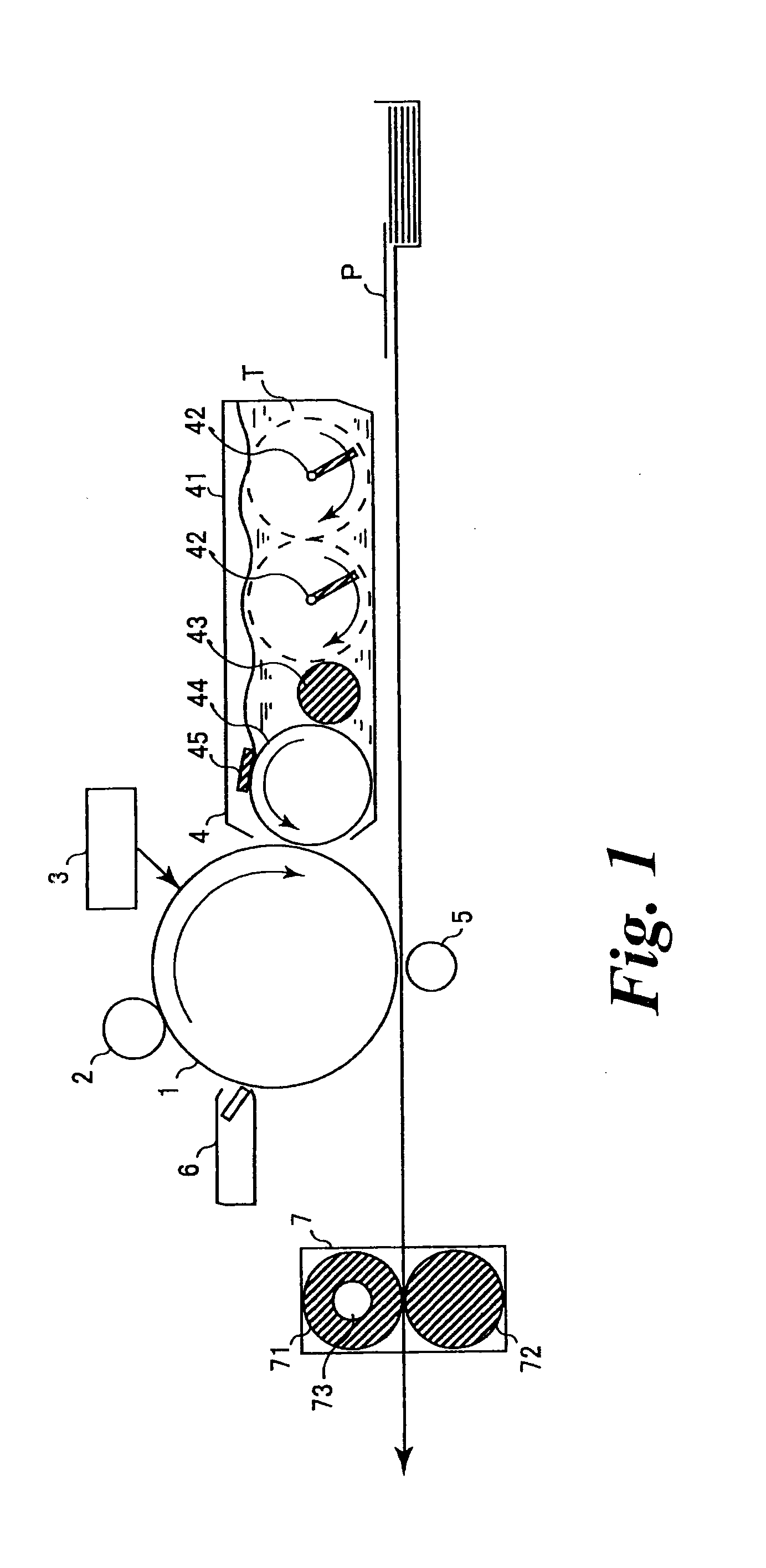Electrophotographic photoreceptor and image-forming apparatus
a photoreceptor and photoreceptor technology, applied in the field of electrophotographic photoreceptors, can solve the problems of deterioration of various properties, low chargeability, and inability to achieve desired electric and image properties of obtained electrophotographic photoreceptors, etc., to achieve low residual potential, high chargeability, and high sensitivity
- Summary
- Abstract
- Description
- Claims
- Application Information
AI Technical Summary
Benefits of technology
Problems solved by technology
Method used
Image
Examples
example 1
[0136]A 75 μm-thick polyester film having vapor-deposited thereon aluminum was used as the support, and the following coating solution for charge generating layer was coated thereon by a wire bar to have a dry film thickness of 0.4 μm and dried to form a charge generating layer. On this layer, the following coating solution for charge transport layer was coated by an applicator and dried at room temperature for 30 minutes and then at 125° C. for 20 minutes to produce Photoreceptor A having a 25 μm-thick charge transport layer. The coating solution for charge transport layer used here was coated on a quartz glass to have a dry film thickness of 25 μm and dried, and the transmittance of the obtained sample for light at 427 nm was measured using a spectrophotometer UV1650PC manufactured by Shimadzu Corporation with the background being an equivalent quartz glass and found to be 99.9%.
[0137]Coating Solution for Charge Generating Layer
[0138]30 Parts of 1,2-dimethoxyethane was added to 1....
example 2
[0141]Photoreceptor B was produced in the same manner as in Example 1 except that in the coating solution for charge transport layer used Example 1, the amount of the compound represented by formula (7) was changed to 90 parts. The transmittance of the film for light at 427 nm was measured in the same manner as in Example 1 by using the coating solution for charge transport layer used here and found to be 99.9%.
example 3
[0142]Photoreceptor C was produced in the same manner as in Example 1 except that in the coating solution for charge transport layer used Example 1, the amount of the compound represented by formula (7) was changed to 50 parts. The transmittance of the film for light at 427 nm was measured in the same manner as in Example 1 by using the coating solution for charge transport layer used here and found to be 99.9%.
PUM
 Login to View More
Login to View More Abstract
Description
Claims
Application Information
 Login to View More
Login to View More - R&D
- Intellectual Property
- Life Sciences
- Materials
- Tech Scout
- Unparalleled Data Quality
- Higher Quality Content
- 60% Fewer Hallucinations
Browse by: Latest US Patents, China's latest patents, Technical Efficacy Thesaurus, Application Domain, Technology Topic, Popular Technical Reports.
© 2025 PatSnap. All rights reserved.Legal|Privacy policy|Modern Slavery Act Transparency Statement|Sitemap|About US| Contact US: help@patsnap.com



